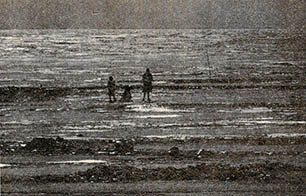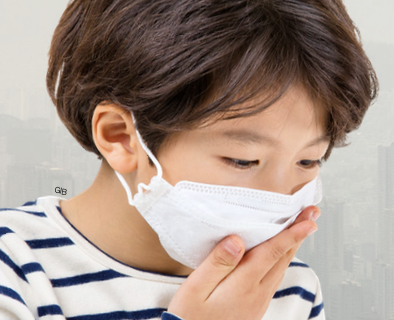겨울, 그리고 체온저하증의 위험이 지구의 한 부분인 필자가 사는 이곳에도 다가오고 있으나 남아프리카 공화국의 윌리 톨로가 올해의 뉴욕 마라톤대회에서 우승했던 이곳 센트럴공원은 지금 무성한 단풍으로 아름다움을 한껏 자랑하고 있다. 스포츠기자들은 날씨가 너무 따뜻해서 26.2마일을 달리는 동안 계속 땀을 흘려야 했던 예년에 비하면 이번 대회 때의 날씨는 너무 춥지는 않은 채 선수들에게 알맞을 정도로 쌀쌀했다고 말했다.
따뜻한 것보다 쌀쌀한 날씨가 더욱 좋을까? 경우에 따라 다를 수도 있다. 체온저하증은 몸의 체온이 낮아지는 것을 뜻한다. 반면 체온상승증은 그 반대로, 가끔씩(감기와 같은) 감염병을 치유하는데 도움을 주기도 하지만 대부분 너무 추운 것보다 훨씬 위험하다. 고열은 심각한 체온저하증으로부터 회복했을 때보다 사람에게 영구적인 두뇌손상을 일으킬 가능성이 더 크다. 이러한 사실은 하루가 다르게 맹렬히 다가오는 듯한 겨울을 반갑기도 하고 불안하기도 한 감정으로 맞는 우리에겐 위안이 될 수도 있겠으나 역시 너무 추워지는 것은 문제점으로 대두된다.
최근 의학계에선 미미한 체온저하증도 위험할 수 있다는 사실이 자주 강조되고 있다. 이것은 특히 춥다는 것을 잘 느끼지 못하는 환자나 노인들에게 더욱 그러하다. 이들은 외출할 때 옷을 따뜻하게 입지 못하거나 다른 사람에겐 편안한 온도일지 모르지만 자신들에겐 너무 쌀쌀한 방에서 텔레비전을 시청하고 있다는 사실을 깨닫지 못한다. 이들에겐 정상적인 체온을 유지하려는 생리적 기능이 마비돼 있을 수도 있다. 추운 환경에서 사람들은 충분한 음식과 물을 섭취하고 계속 활동하면서 따뜻한 복장의 도움으로 체온을 유지할 수 있는 것이다. 그렇지 못하면 체온이 떨어져 간다. 이러한 현상은 공기온도가 10℃(50℉)정도로 높을 때에도 나타날 수 있다.
물의 온도는 이보다 높더라도 생명을 잃게 만들수 있다. 바다에서 조난사고를 당한 많은 사람들은, 대부분의 우리가 기분좋다고 느끼는 시원한 물위에서 떠다니면서도 그들의 젖은 몸속의 열이 너무 많이 빠져나가는 바람에 사망하기도 했다. 수영선수들의 '수영복'의 기능이 바로 체온을 유지하는 것이다.
체온은 일단 35℃(95℉)까지 내려가면 점점 더 내려가게 돼 있다. 두뇌가 둔해져서 사람들은 감정을 잃게 되고 발음이 똑똑치 못하며 말의 조리가 없어지게 된다. 근육의 통제가 흐려지고 몸도 굳어진다. 심장의 '전기적' 기능상실이 나타날 가능성도 많고 콩팥이 작용하지 않는다. 그러다가 결국 혼수상태로 빠지고 사망으로 연결되는 것이다.
여기서 중요한 것은 체온저하증으로 사망한 것처럼 보이는 사람을 다시 살릴 수도 있다는 점이다. 이것은 특히 찬 물에 빠져죽은 어린애의 경우 더욱 그렇다. 적절한 치료를 받으면 영구적인 신체의 손상이 없이 다시 살아나는 경우가 있다.
손발 등이 너무 차갑게 되면 동상에 걸리게 된다. 동상은 몸이 차가워져서 손 발 코 귀 등으로의 혈액순환을 막아 심장과 두뇌와 같은 생명을 보전하는데 중요한 기관들을 위해 열을 아끼고자 할때 나타나기 쉽다. 우린 동상에 걸리고 있다는 사실을 느낄 수 없으므로 최선의 대책은 몸과 손발 등을 따뜻하게 하는 것이다(얼굴이 어는 것으로부터 보호하기 위해 스키마스크도 있다). 우린 자신 뿐아니라 될 수 있으면 동행하는 사람들의 겉으로 나타난 부분들을 관찰해야 한다. 만약 코가 다른 부분보다 하얗게 변하면 문제가 있다. 이땐 동상에 걸렸는지 알아보기 위해 즉시 병원을 찾아야 한다.
사람에 비해 다른 동물들의 손 발 코 귀 등은 더욱 잘 보호돼 있다. 찬 기후에 살아가는 발굽이 없는 포유동물들은 발에 지방질과 털이 많아 우리처럼 외출할 때 무겁고 두툼한 신을 신거나 장갑을 끼지 않아도 된다.
혹시 아무 것으로도 덮여있지 않은 새들의 발이 겨울엔 얼어버리지 않을까 생각할 수도 있겠으나 대부분 그렇지 않다. 어떤 새들은 혈액순환의 해부적 적응구조를 가져 차가워지는 것으로부터 보호된다. 다리로 들어가고 나오는 혈관들이 서로를 감싸서 몸에서 나오는 피가 차가워진 다리로부터 올라오는 피를 따뜻하게 함으로써 신체내부의 열을 보전하는 것이다. 어떤 생물체들은 차가움에 반응할 뿐더러 아예 그것을 필요로 한다. 가령 많은 꽃나무(백합 히아시스 등)의 인경은 한동안 추운 곳에 있지 않으면 꽃을 피우지 않는다. 따라서 발코니가 없는 아파트에 사는 도시인들은 대신 인경을 냉장고 속에 보관하기도 한다.
자넷과 케네스 스토리는 페인트로 표시해둔 거북이를 연구한 결과, 알에서 깨어나온 새끼 거북이들(추운 겨울을 보내면서도 잘 산다)이 11일 동안 꽁꽁 얼려놓은 후에도 다시 살아남을 밝혀냈다. 이것은 그 어떠한 온혈동물도 견뎌낼 수 없는 것이다(물론 어떤 사람들은 사망후 다시 부활할수 있으리라는 기대로 자신의 몸을 얼려놓으라는 유언을 남기기도 하지만 말이다).
여기서 주목해야할 점은, 심지어는 거북이도 얼려있을때 세포속의 수분이 액체로 유지돼야 한다는 것인데 이는 수분이 큰 얼음조각들로 변하면 세포조직 자체를 영구적으로 손상시킬 수 있기 때문이다. 포유동물과 달리 거북이나 그밖의 언 후에도 다시 살아나는 동물들은 특수한 생화학적 반응으로 몸이 얼어도 세포의 손상으로부터 보호하는 기능이 있다. 그러나 거북이의 경우에도 진정 보호되는 것은 새끼들 뿐이다. 거북이는 어른이 되면 몸이 얼지 않는 물속에서 동면을 한다.
많은 동물의 체온조절은 신경계의 통제로 가능케 되는데 조그마한 집신벌레엔 신경계가 없다. 뉴멕시코주 러브레이스의학제단의 게리 마빈과 스티븐 우드는 저산소(산소가 부족한) 조건에서도 이 단세포생물은 자신이 담겨진 용기의 온도가 낮은 곳에선 생존할 수 있음을 발견했다. 바로 체온저하증이 이 원생동물의 생명을 보전토록 하는 것이다. 사람에게 있어 체온저하증은 특히 어떤 수술을 받을 때처럼 저산소증으로부터 보호하기 위해 의도적인 의학적 조치로 취해지기도 한다. 체온저하증은 신체 외부나 체내기관의 빈 곳이나 혹은 피 자체를 차게 만듦으로서 유도할 수 있다.
좌우지간 이제 겨울이다. 북쪽에 사는 사람이라면 이제 겨울코트와 부츠를 꺼내놓는 것이 바람직할 것이다.

Winter-and the risk of hypothermia-is on its way to my part of the planet, but right now there's a splendid display of fall foliage in Central Park, where South Africa's Willie Mtolo won this year's New York City Marathon. Sports reporters said the weather was "perfect," not too cold but cool enough for the runners, who in previous years have had to sweat through 26.2 miles in too mild weather.
Is being cool preferable to being warm? That depends. Hypothermia means a lowered body temperature. Hypothermia is the opposite, and while it's occasionally used to cure some infections, it is usually more dangerous than being too cold. High fever can leave humans with a greater chance of permanent brain damage than recovery from severe hypothermia. This is comforting for those of us who greet the onslaught of winter with mixed emotions, but we still have to face up to the problems of being cold.
Lately there's been much more medical emphasis on the fact that even mild hypothermia may be dangerous. This is especially true for ill or elderly people, who may have less awareness of being chilled. They won't notice that they're not dressed warmly enough for going outside or even for watching TV in a room that may be comfortable for others but is now too cool for them. These people may also have physiological malfunctions that prevent normal temperature maintenance. In a cool environment, human beings can maintain body temperature by ingesting enough food and water, keeping active and dressing warmly. Otherwise the body temperature falls slowly. This can happen even when the air temperature is as high as 10 degrees Centigrade, or 50 degrees Fahrenheit.
Water temperature can be even higher, yet still cause fatalities. Many shipwrecked people have died while floating in water that most of us would consider pleasantly mild but was cool enough to remove too much heat from their wet bodies. The function of a swimmer's "wet suit" is to keep in the body heat.
When the body temperature gets to 35 degrees Centigrade(95 F), it keeps falling. The brain is numbed; the person becomes apathetic, with slurred speech that becomes incoherent. Muscular control goes, and the body stiffens up. The heart is more likely to go into electrical malfunction, the kidneys fail. Eventually, coma and death result.
The important thing to remember is that it may be possible to revive someone who appears to be dead from hypothermia. This is especially true of small children who have apparently drowned in cold water. With proper medical treatment they can often be revived with no permanent damage.
Frostbite occurs when the extremities become too cold. This is more likely when the body is also cold and shuts off circulation to the arms, legs, nose and ears to conserve heat to vital organs like the heart and brain. Since you can't feel frostbite, the best thing is to keep both body and extremities warm(there are even ski masks to protect the face from freezing). You and, preferably, a companion, should monitor visible parts. If your nose turns whiter than the rest of your face, you're in trouble. See a doctor immediately if you've got frostbite.
The extremities of other animals are more protected than ours. Most non-hoofed mammals that live in cold climates have lots of fat and hair on their paws and don't have to wear heavy, padded boots and gloves to go outside.
You'd think that the naked feet of birds would freeze in winter, but they usually don't. Some birds have an anatomical adaptation of their blood circulation that protects against cold. Blood vessels going to and from the legs surround each other in such a way that blood coming from the body warms the blood coming from the chilled legs, conserving internal body heat.
Other organisms respond to cold, and even need it. Many flowering bulbs, for instance, won't bloom if they can't have a period of being cool. Some city dwellers without balconies keep bulbs in the refrigerator.
Janet and Kenneth Storey studied painted turtles and found that turtle hatchlings(which live through cold winters) can survive even after being completely frozen for 11 days. This is something no warm-blooded animal can do(although there are people leaving orders to be frozen after death, in the hope of subsequent revival).
The catch, even for turtles, is that water inside cells must remain mostly liquid, for large ice crystals will permanently damage cellular structure. Unlike mammals, turtles and other freezable animals have special biochemical reactions to protect against cellular damage of freezing. But only turtle hatchlings are protected; adults hibernate underwater where they won't freeze.
While the nervous systems of many animals control thermoregulation, little Paramecium caudatum has no nervous system. Gary M. Malving and Stephen C. Wood, at the Lovelace Medical Foundation in New Mexico, have discovered that under conditions of hypoxia(oxygen deficiency) this one-celled creature goes to live in the low temperature side of a container. Hypothermia enables the protozoan to survive.
In humans, hypothermia is sometimes induced medically to protect against hypoxia, expecially during some surgery. Hypothermia can be achieved by cooling the outside of the body, or the various body cavities, or the blood itself.
In the meantime, it's winter. Up North, you'd better find your winter coat and boots!
(C) 1992, Los Angeles Times Syndicate
















